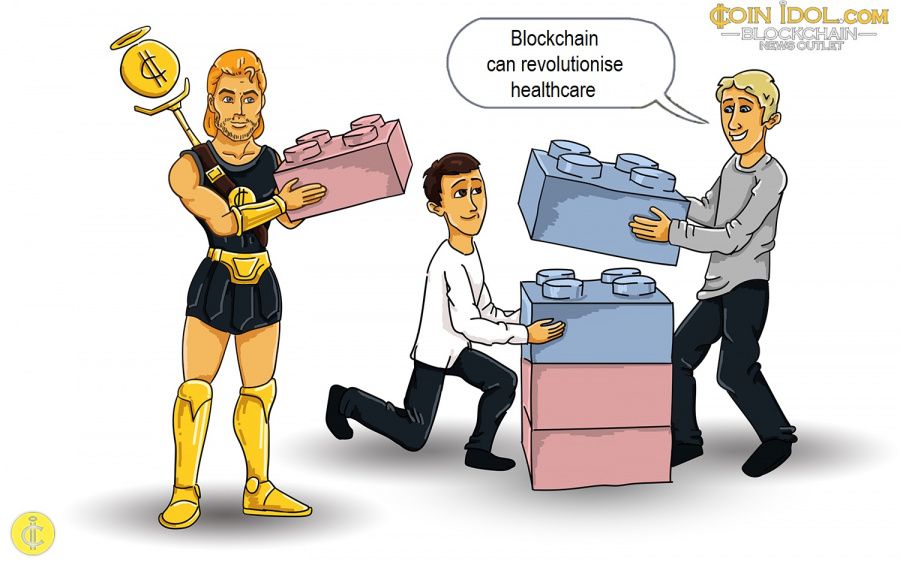The Key Points of Blockchain Revolution for Digital Healthcare
Updated: Dec 20, 2019 at 09:59

The distributed ledger technologies (DLTs), better known as blockchain, will be the operating platform of future proof models in healthcare and medical services. This is why a connective system of data and processes will be able to overcome the problems of the National Health Service (NHS).
Beyond the electronic health record Blockchain technologies have the right requirements to enable new models for medical services in digital health. Provided that their design follows a different approach from that used for Bitcoin. All aspects to be taken into consideration to obtain effective and economically sustainable systems.
In recent years, significant changes in important socio-economic indicators, such as population growth, increased life expectancy and strong patient mobility, have highlighted the need to provide new models for health services.
On the other hand, the development of increasingly sophisticated and pervasive network technologies and sensors, together with advances in the field of artificial intelligence (AI), will shortly enable data to be acquired and processed during people's daily activities, integrating them with those obtained from diagnostic centers and thus enabling new approaches in medicine.
A decisive aspect for the success of such approaches will be represented by having operating platforms that act as "connective" between the various data sources, while guaranteeing the authenticity of the information acquired and their correct processing in compliance with the regulations in force.
The emerging DLT have the right characteristics. Only, however, if they are used correctly, solving some technological and research problems that stand in the way of their actual use, will they be the enabling factor to revolutionize health care and medical research, as we will try to illustrate below.
The 4 Key Points of DLT
Blockchain technologies can be successfully applied in healthcare, but only if their design follows a different approach from that used for systems such as Bitcoin and Ethereum. In our opinion, there are four aspects to take into due consideration if we want to obtain really effective and economically sustainable systems.
1. First of all, the monolithic structure of the aforementioned systems does not allow a clear separation between the network level and the application level: the register managers are also appointed to approve the transactions.
More recent approaches, like the one implemented in Hyperledger Fabric, allowing instead to have nodes that act as registry validators and others that validate applications. In this way, it is possible to define policies for accessing data and executing programs that are flexible and that do not depend strictly on the decentralization architecture adopted.
This is of particular relevance in the healthcare context, given the multiplicity of actors involved in the production and consultation of data in compliance with the jurisdiction in force concerning the protection of personal data.
2. The most appropriate decentralization model is the permissioned type, where a limited number of actors with the necessary credentials (healthcare companies, regional administrations, ministries, etc.) are in charge of managing the register without having to resort to consensus algorithms computationally expensive and dependent on a cryptocurrency or financial token.
For example, in the case of the Electronic Health Record (ESF), the actors responsible for maintaining a copy of the register could be the regions and autonomous provinces - which have the task of establishing the ESF - and possibly the governmental bodies designated by the law.
It is also important to highlight that experiences such as those of the Patientory and Medicalchain societies show that it can be risky to expose the governance of systems for the management of health data to financial market speculation: to date both companies are in fact losing their investors beyond 98% of capital invested. Furthermore, the monetization of health data would seem to undermine the ethical principles on which our Constitution is founded.
3. It is important to understand that systems for the management of data and health processes have requirements and functional constraints very different from cryptocurrencies. This is reflected in the type of transactions that must be managed and in the programmed logic (smart contract) to do so, which are also specific for individual healthcare use cases.
For example, functionality to monitor a Diagnostic-Therapeutic Care Pathways (PDTA) or to access health information contained in a citizen's ESF or to identify a healthcare professional requires exchanges of information that are very different from each other, therefore separate transactions and services.
Ideally it should be possible to have a set of programming interfaces (APIs) for decentralized applications, which are oriented to the management of processes and health data, so as to allow the creation of modular and interoperable systems.
4. Data storage must take place off-chain for reasons of scalability, integration with current systems and adherence to the General Data Protection Regulation (GDPR). Using a blockchain to store massive data, as well as being inefficient, distorts the functional characteristics of these systems, designed to track events and actions rather than storing data and querying and processing them.
News
Coin expert
Politics
Price
Price

(0 comments)